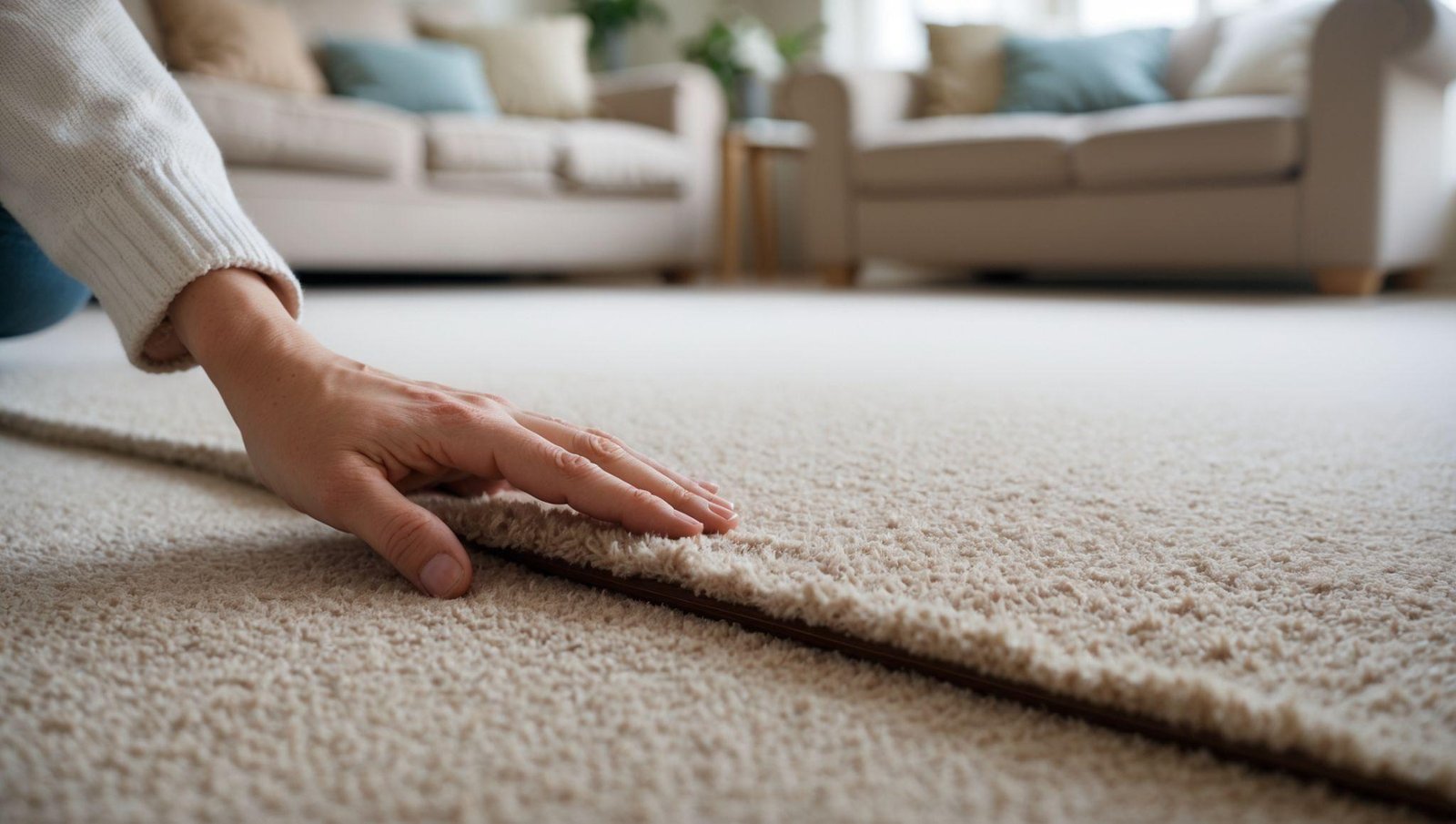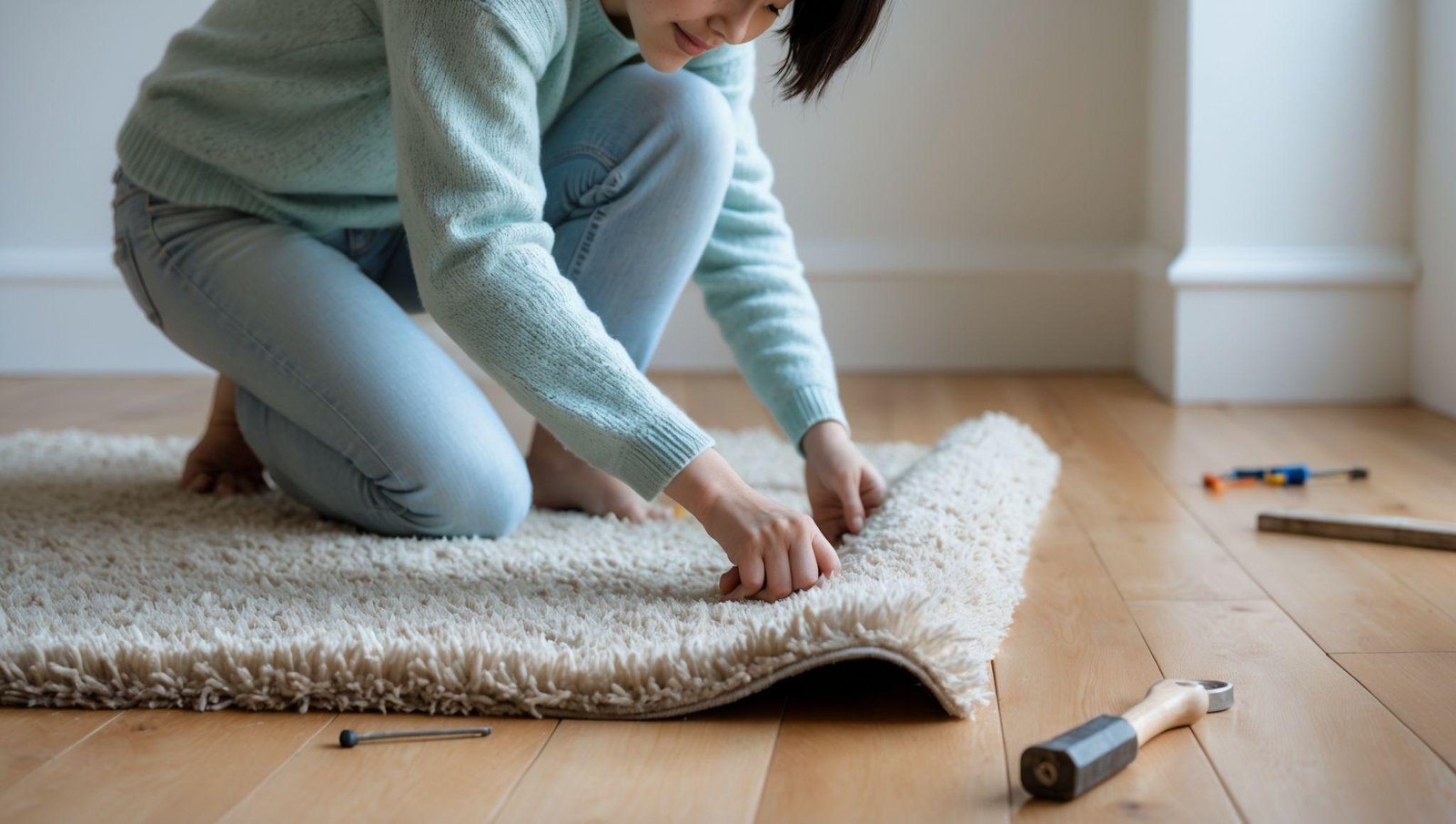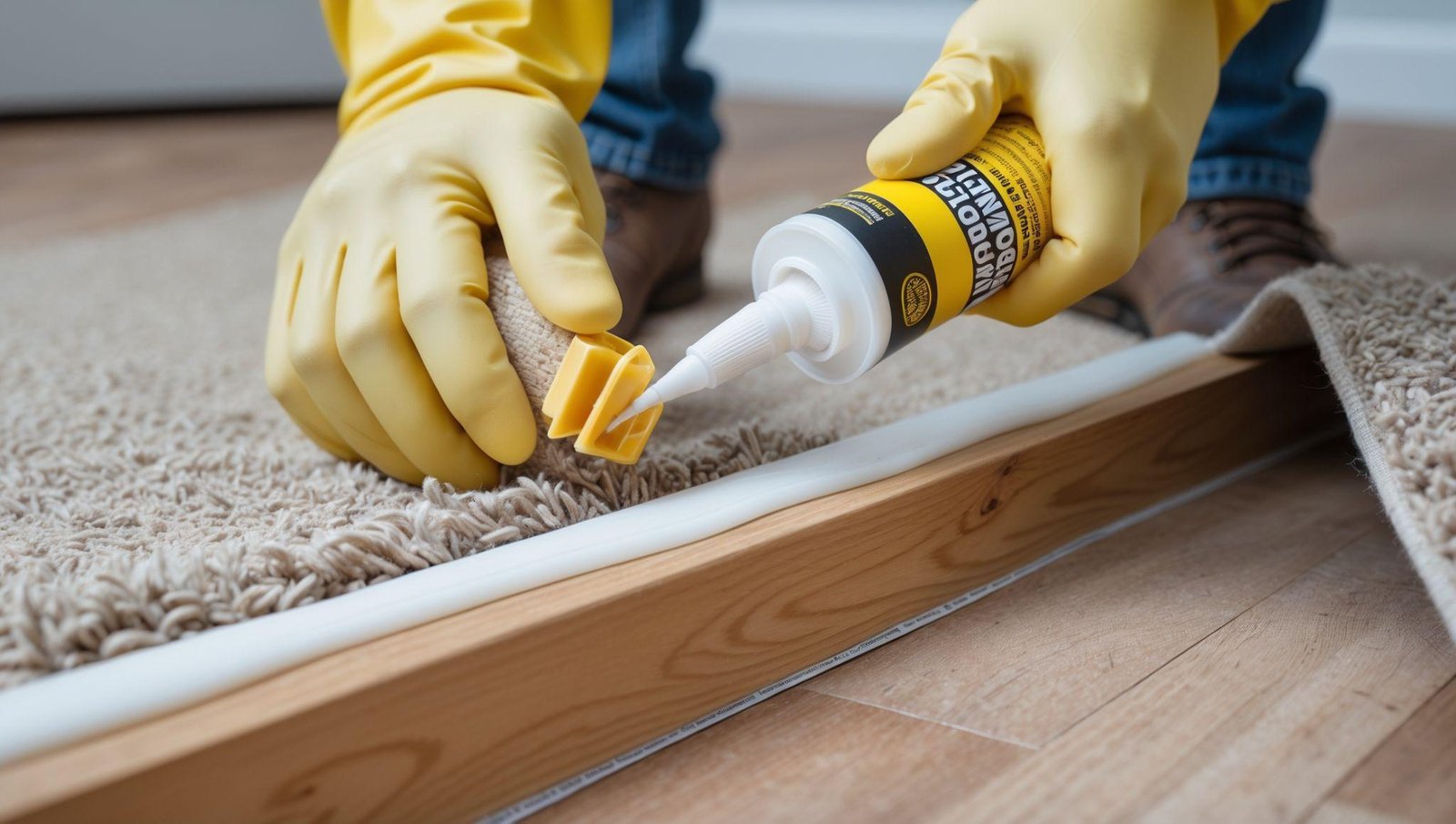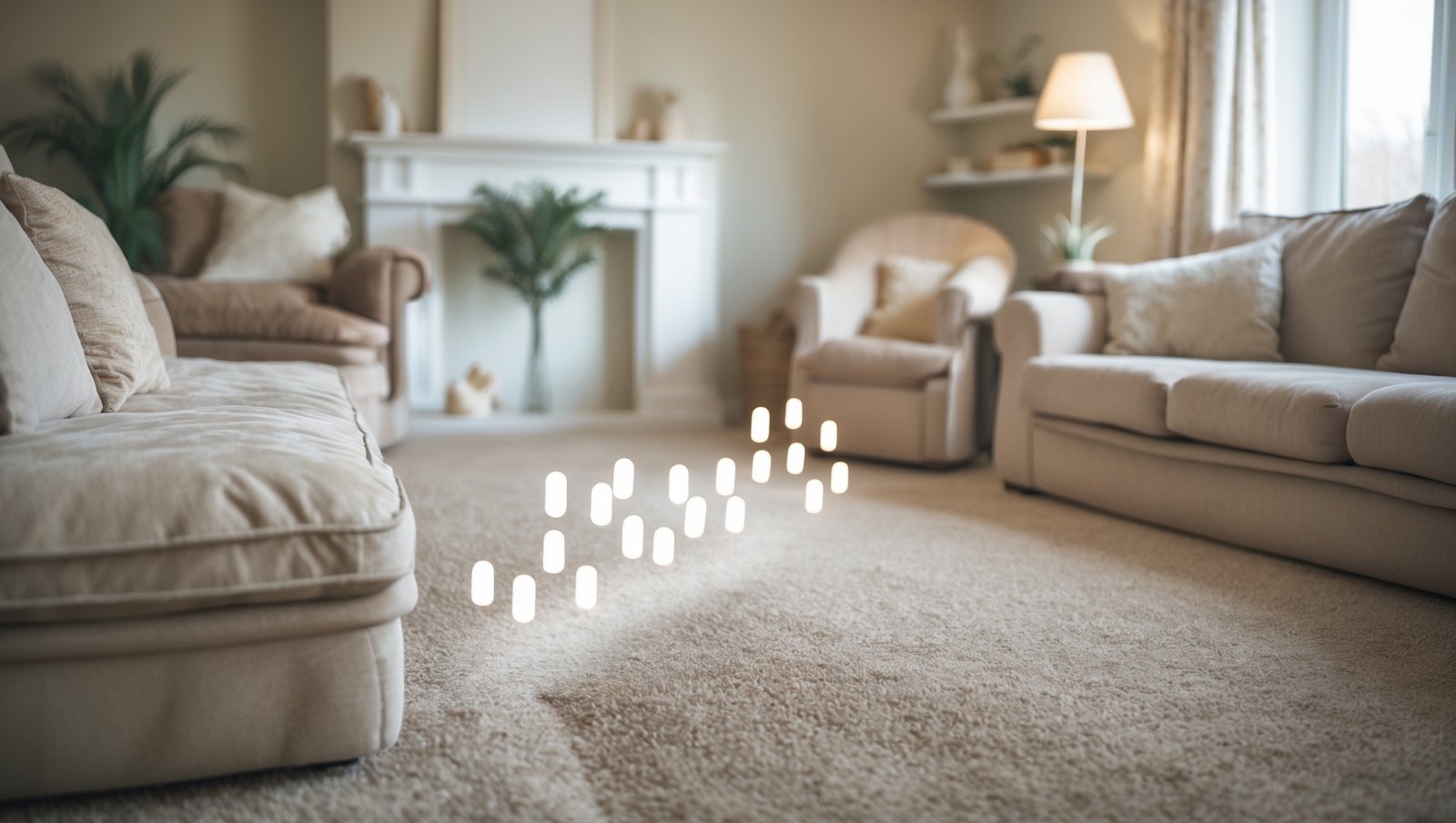Squeaky floors under the carpet can be one of the most annoying home issues, especially when you want peace. We’ve all been there—walking across a room only to hear that constant creak. It’s frustrating, right? But don’t worry; you don’t have to rip up your carpet to fix squeaky floors. From my experience, there are simple and effective ways to stop creaking floorboards without the hassle of removing the carpet. In this article, I’ll share some tried-and-true methods to fix squeaky floors under carpet, offering short-term and permanent solutions. Let’s dive in and get your floors back to being squeak-free!
Understanding Squeaky Floors and Why They Happen
Before we dive into solutions, it’s essential to understand why your floorboards are squeaking in the first place. Squeaky floors don’t happen for no reason—they’re usually caused by one (or more) of the following factors:
What Causes Squeaky Floors?
- Friction Between Floorboards
- The most common cause of squeaks is friction between the floorboards. Over time, the wood can shift and rub against the other boards underneath, creating that familiar squeaking sound. This usually happens when the wood contracts or expands due to changes in humidity or temperature.
- Loose or Damaged Nails or Screws
- When nails or screws become loose, they stop securing the floorboards properly. This allows the boards to shift and rub against each other, causing the noise. In older homes, it’s common to find nails that have loosened up over the years, adding to the squeaky problem.
- Wood Expanding and Contracting Due to Moisture
- Changes in moisture levels can cause the wood to expand or contract. The wood can press against adjacent boards when it expands and cause friction. Likewise, as the wood contracts in dry conditions, gaps form, and the movement can lead to squeaks.
- Settling of the House Foundation
- If your house settles, the floorboards may shift or become uneven, leading to squeaks. This is especially common in older homes with settled foundations or homes that have experienced significant moisture changes.
Common Areas for Squeaky Floors Under Carpet
While squeaky floors can happen anywhere in the home, some areas are more prone to creaking than others:
- High-Traffic Areas: Hallways, living rooms, and frequently walked areas are prime spots for squeaks. The more weight and pressure the floorboards experience, the more likely they are to shift and squeak.
- Older Homes vs. Newer Constructions: Older homes, especially those with wood subflooring, are more prone to squeaks due to the natural wear and tear on the materials over time. Newer homes can experience squeaks, too, but they tend to be less frequent as modern construction practices often use more durable materials.
How to Stop Creaking Floorboards Without Removing Carpet

Now that we know what’s causing the squeaks let’s get into the good stuff: how to stop those creaky floorboards without removing your carpet.
Method 1: Use Powdered Talcum or Graphite Powder
P powdered talcum or graphite powder can be a great option for a temporary fix. Here’s how it works:
Step-by-step:
- Sprinkle the powder generously along the seams of the carpet where you suspect the squeaky floorboards are located.
- Work the powder into the carpet fibers with your hands or a soft brush.
- Walk on the carpet to distribute the powder evenly beneath the floorboards.
Why It Works: The powder reduces the friction between the floorboards and allows them to move more smoothly, temporarily quieting the creaking. It’s an easy and non-invasive solution that doesn’t require carpet removal.
Method 2: Use WD-40 or Silicone Spray
WD-40 is a popular lubricant that many use to fix squeaky floors temporarily. Here’s how to apply it:
Step-by-step:
- If you can access the edges of the floorboards under the carpet, spray a small amount of WD-40 or silicone spray directly onto the seams of the floorboards.
- Work the lubricant into the floor by pressing gently on the carpet to ensure it reaches the wooden floorboards.
- Let it sit for a few minutes, then walk across the area to distribute the lubricant.
Effectiveness: WD-40 provides a temporary solution for minor squeaks. However, as its effects wear off, it may need to be reapplied over time.
When to Avoid WD-40: While WD-40 can help with temporary squeaks, it’s not a permanent solution. For heavy or persistent squeaks, you’ll need to try other methods.
Method 3: Reinforce Loose Floorboards with Screws (Without Removing Carpet)
One of the more permanent solutions involves securing loose floorboards with screws. This method works well when loose boards cause the squeaks.
Step-by-step:
- Use a screwdriver to drive screws through the carpet into the floorboards beneath carefully. Make sure the screws are long enough to reach the subfloor but not so long that they puncture through the rug.
- Work your way across the squeaky area, inserting screws about 4-6 inches apart to secure the floorboards.
- Once you’re finished, use a hammer to tap the screws flush with the floor to avoid any noticeable bumps in the carpet.
Tools Needed: Screwdriver, screws, and a long drill bit (if needed to reach deeper floorboards).
Tip: Be careful not to damage your carpet. Place a piece of cardboard underneath your drilling area to protect the fabric.
Method 4: Use a Squeak-Ender Kit (For a Deeper Fix)
If you’re dealing with stubborn squeaks, a Squeak-Ender kit is a great solution. This tool is designed to fix squeaky floors without ripping up your carpet.
Step-by-step:
- Follow the instructions in the Squeak-Ender kit to locate the creaky area under the carpet.
- Use the kit to apply screws or brackets that will pull the subfloor and floorboards together, effectively eliminating the squeak.
Why It’s Effective: This method provides a more permanent solution by targeting the creak at its source and securing the floorboards. It’s a simple, non-invasive fix that works well for deeper squeaks.
Do I Have to Remove the Carpet to Fix a Squeaky Floorboard?

You might wonder if you must remove your carpet to fix those squeaky floors. The good news is that you don’t! Most solutions can be applied without the hassle of tearing up your carpet.
Addressing Common Misconceptions
Many people assume that to fix squeaky floors under the carpet; you have to rip up the carpet and start from scratch. That’s not the case. Many methods allow you to access the floorboards without removing your carpet entirely.
Alternative Methods That Work
- Accessing Floorboards through Baseboards or Adjacent Rooms: Sometimes, you can access the floorboards from another housing area. For example, suppose an adjacent room has an accessible floor or baseboard. In that case, you may reach the squeaky area from there.
- Using Specialized Tools: As the Squeak-Ender mentioned earlier, tools are designed to address squeaky floors without removing the carpet. These tools are often easy to use and can fix the problem without much effort.
How to Permanently Fix Squeaky Floors Under Carpet

If you’re looking for a more permanent fix, you can try a few methods to provide lasting relief.
Permanent Fix 1: Reinforce Subflooring with Construction Adhesive
One way to eliminate squeaks for good is by reinforcing the subflooring. This method involves securing the subfloor to the floor joists.
Step-by-step guide:
- Apply construction adhesive under the carpet along the seams of the squeaky area.
- Use a roller or a similar tool to ensure the adhesive spreads evenly.
- Press the floorboards down gently to secure them in place.
How It Works: This stops the floorboards from shifting, effectively preventing the squeaks from returning. It’s a great long-term solution for squeaky floors under carpet.
Permanent Fix 2: Replace Worn-out Nails with Screws
Another long-term solution is to replace old nails with screws. Screws are far more secure and less likely to loosen over time compared to nails.
Step-by-step:
- Use a screwdriver to replace any loose or rusty nails with screws.
- Drive the screws deep enough to secure the floorboards tightly to the subfloor.
- Once you’re done, tap the screws flush with the floor to avoid any noticeable bumps in the carpet.
Why It’s More Effective Than Nails: Screws hold better over time and are less likely to loosen, providing a more permanent solution to squeaky floors.
Will WD-40 Stop Floorboards from Creaking?

While WD-40 is a go-to solution for squeaky hinges and other minor squeaks, it’s not always the best option for fixing floorboards.
Understanding WD-40’s Role in Fixing Floorboards
WD-40 can provide short-term relief, but it’s not a permanent fix. Its lubrication temporarily reduces friction but won’t stop the floorboards from shifting or moving.
Short-Term vs. Long-Term Effectiveness
WD-40 is great for quick fixes, especially when dealing with light squeaks. However, it’s best used as a temporary solution. You’ll need to look into the earlier methods for more permanent relief.
Alternative Lubricants
Try silicone spray or specialty products like Squeak-Ender if you want a more lasting option. These products are designed to last longer and provide more effective relief.
Other Considerations for Fixing Squeaky Floors
Before you get started, here are a few additional tips to keep in mind:
Moisture Control
Controlling the humidity in your home can help prevent your wood floors from expanding and contracting, reducing the likelihood of squeaks.
Choosing the Right Time for Repair
It’s best to fix squeaky floors during drier months to avoid expansion issues that could worsen the squeaks.
Preventing Future Squeaks
Regular maintenance, such as tightening screws and ensuring no moisture buildup, can keep your floors quiet for years to come.
Conclusion
No one likes dealing with squeaky floors under carpet, but with patience and the right tools, you can silence those creaks for good. Whether you’re looking for a temporary or permanent fix, plenty of options don’t require removing the carpet. Try the methods I’ve shared here, and you’ll be well on your way to enjoying quiet, squeak-free floors again. Don’t let a little noise ruin your comfort—take action today and reclaim your peace!
FAQs Section
- How can I tell if my floor is creaking because of loose nails or damaged boards?
- Test for loose nails by gently tapping on the boards. If they move, they may need to be secured with screws.
- What’s the easiest way to stop squeaky floors under carpet?
- Powdered talcum or WD-40 are quick, temporary fixes for minor squeaks.
- Can a professional help fix squeaky floors under the carpet?
- If the squeaks are persistent, a professional can help identify the cause and offer a long-term solution.
- Do squeaky floors ever come back after repair?
- If you properly secure the floorboards and address the underlying issue, squeaks should be gone for good.
